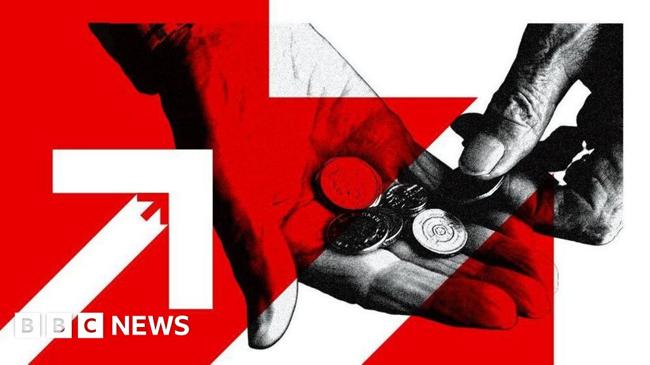Summary
Consumers increased their expectations for inflation over the three-year time horizon, but apparently expect inflation to settle down further out, according to the New York Fed’s Survey of Consumer Expectations.
Source: Seeking Alpha on MSN.com

AI News Q&A (Free Content)
Q1: What were the key findings of the New York Fed's 2024 Survey of Consumer Expectations regarding inflation over different time horizons?
A1: The New York Fed's 2024 Survey of Consumer Expectations found that U.S. consumers increased their inflation expectations for the three-year horizon, indicating ongoing concerns about price rises in the near term. However, expectations for longer-term inflation beyond three years were more subdued, suggesting that consumers believe inflation will moderate in the longer run. This shift aligns with broader economic trends showing that while short-term inflation pressures remain, there is optimism for eventual stabilization.
Q2: How did the 2021–2023 global inflation surge impact U.S. retail prices and consumer behavior?
A2: The 2021–2023 global inflation surge, driven by pandemic-related supply chain disruptions, fiscal and monetary stimulus, and the 2022 Russian invasion of Ukraine, pushed U.S. inflation to its highest rate since 1981. This led to significant increases in retail prices, prompting consumers to alter their shopping habits—such as prioritizing essential goods, seeking discounts, and switching to store brands. Many economists noted that the surge exposed the sensitivity of consumer behavior to rapid price changes and uncertainty.
Q3: What technological innovation has been introduced to improve demand forecasting and inventory management in retail during periods of inflation?
A3: A recent innovation in retail is the use of Generative Adversarial Networks (GANs) to simulate consumer transactions and optimize inventory management. By incorporating stock-keeping unit (SKU) data into their models, retailers can predict consumer behavior under varying stock constraints. This allows for more accurate demand forecasting, helping retailers adapt to inflationary pressures by minimizing stockouts and overstock situations, thus improving overall operational efficiency.
Q4: According to recent research, how significant is the role of inflation rates in predicting retail chain failures in the U.S.?
A4: Recent research analyzing U.S. retail chain failures between 2013 and 2022 found that annual average U.S. inflation rates are statistically significant predictors of retail failure. Higher inflation increases operational costs and squeezes profit margins, particularly for brick-and-mortar retailers. The study indicated that monitoring inflation trends can provide early warning signals for potential retail chain distress, aiding in risk management and strategic planning.
Q5: In what ways do consumers adapt their shopping decisions in supermarkets during periods of high inflation?
A5: During periods of high inflation, consumers in supermarkets often shift to cost-saving behaviors such as buying in bulk, choosing generic or store brands over premium products, seeking out discounts and promotions, and reducing discretionary spending. Additionally, shoppers may prioritize essential items and alter their shopping frequency to manage budgets more effectively amid rising prices.
Q6: What does scholarly research suggest about the relationship between supply-demand dynamics and retail inflation?
A6: Scholarly research underscores that imbalances in supply and demand are central drivers of retail inflation. When demand outpaces supply—due to factors like supply chain disruptions or increased consumer spending—retail prices tend to rise. Conversely, improvements in supply chains or reductions in demand can help moderate inflation. Accurate modeling of these dynamics is critical for retailers to set competitive prices and manage inventory effectively.
Q7: How have consumer expectations and behavior influenced the economic concept of a 'soft landing' for the U.S. economy in 2024?
A7: Consumer expectations for moderating long-term inflation have contributed to a 'soft landing' for the U.S. economy in 2024, where inflation nears target levels without triggering a recession. This outcome is partially attributed to adaptive consumer behavior—such as strategic spending and responsiveness to price signals—which, combined with effective monetary policy, has allowed economic growth to continue while inflation pressures ease.
References:
- New York Fed Survey of Consumer Expectations, 2024
- , "2021–2023 inflation surge
- , "Consumer Transactions Simulation through Generative Adversarial Networks
- , "Prediction of retail chain failure: examples of recent U.S. retail failures
- , "Retail Price Index





